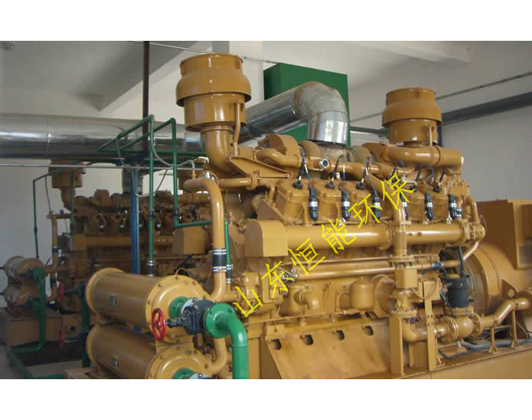將一些廢棄物進行發酵處理,可以制取清潔能源——沼氣!那么你知道到影響沼氣發酵的原因有哪些嗎?下面沼氣提純設備廠家給大家普及一下,希望對大家有所幫助!
Some waste can be fermented to produce clean energy - biogas! So do you know the reasons that affect biogas fermentation? The following biogas purification equipment manufacturers to popularize, I hope to help you!
1.溫度
1. Temperature
沼氣發酵可分為三個溫度范圍:50~65℃稱高溫發酵,20~45℃稱中溫發酵,20℃以下稱低溫發酵。此外,隨自然溫度變化的發酵方式稱常溫發酵。沼氣發酵受到溫度和溫度波動的影響。在同一溫度類型條件下,由于沼氣發酵微生物的代謝活動隨著溫度的上升而增加,在一定的溫度范圍內,溫度越高,發酵產氣速率越快;短時間內若溫度波動幅度過大時,可能導致停止產氣。
Biogas fermentation can be divided into three temperature ranges: high-temperature fermentation at 50-65 degrees C, medium-temperature fermentation at 20-45 degrees C and low-temperature fermentation at 20 degrees C. In addition, the fermentation mode that changes with natural temperature is called normal temperature fermentation. Biogas fermentation is affected by temperature and temperature fluctuation. Under the same temperature type, because the metabolic activity of biogas fermentation microorganisms increases with the increase of temperature, in a certain temperature range, the higher the temperature, the faster the fermentation gas production rate; if the temperature fluctuation is too large in a short time, it may lead to the cessation of gas production.
2.酸堿度(PH值)
2. Acidity and alkalinity (PH value)
通常沼氣池中的產甲烷細菌適宜的PH值范圍為6.5~7.8,PH值的變化會直接影響產甲烷菌的生存和代謝。一般情況下,沼氣池的PH值應維持在6.8~7.5之間,好在7.2左右。pH值在5.5以下,產甲烷菌的活動完全受到抑制,而pH值上升至8甚至8.5時,仍保持一定的產氣率。產酸菌的pH值范圍為4.0~7.0,在超過甲烷菌的佳pH值范圍,酸性發酵可能超過甲烷發酵,造成反應器內“酸化”現象的發生。
Usually, the suitable PH value of methanogens in biogas digesters ranges from 6.5 to 7.8. The change of PH value will directly affect the survival and metabolism of methanogens. In general, the PH value of biogas digester should be maintained between 6.8 and 7.5, preferably around 7.2. When the pH value is below 5.5, the activity of methanogens is completely inhibited, while when the pH value rises to 8 or even 8.5, a certain gas production rate is maintained. The pH value of acid-producing bacteria ranges from 4.0 to 7.0. Acidification may occur in the reactor when acidic fermentation exceeds the optimum pH value of methanogens.
3.氧氣含量
3. Oxygen content
沼氣發酵啟動和投料時帶入的一部分氧氣對沼氣發酵危害不大,不會破壞沼氣發酵的正常進行。這是因為沼氣池中存在一部分好氧菌和兼性菌,帶入的氧氣很快會被不產甲烷細菌中的好氧菌或兼性菌消耗掉,使池內保持厭氧環境,同時這一部分氧氣也使好氧菌、兼性菌與厭氧菌保持著動態的平衡關系,但為了保持好的厭氧環境,發酵過程中必須不漏氣。
The oxygen brought in during the start-up and feeding of biogas fermentation is not harmful to the biogas fermentation and will not destroy the normal process of biogas fermentation. This is because there are some aerobic bacteria and facultative bacteria in the biogas digester, which will soon be consumed by the aerobic bacteria or facultative bacteria in the methane-free bacteria, thus keeping the anaerobic environment in the digester. At the same time, this part of oxygen also keeps the dynamic balance between aerobic bacteria, facultative bacteria and anaerobic bacteria, but in order to maintain a good anaerobic environment. Oxygen environment, the fermentation process must not leak air.

4.沼氣發酵原料的碳氮比
4. C/N Ratio of Biogas Fermentation Materials
發酵原料的碳氮比(C/N),是指原料中有機碳含量和氮含量的比例關系。沼氣發酵微生物需要的一定的碳、氮、磷等營養物質,才能正常生長和進行生命活動。碳元素為微生物生命活動提供能量,是形成甲烷的重要物質;氮元素也是構成微生物細胞的主要元素。這三種營養元素之間的比例,不論是好氧發酵還是沼氣發酵,氮與磷的比例是確定值,為5:1。碳與氮的比值則范圍較寬,以往的實踐認為發酵原料的C/N以(13~30:1)為宜,大于30:1效果不佳,小于13:1還可正常發酵。但是,實際上以人糞便為主要原料(C/N=3.9:1)的沼氣池也能很好的運行。所以,正常的沼氣發酵要求合適的碳氮比,但不嚴格,要重視沼氣池的啟動和培養好相適應的菌種,提高沼氣發酵細菌的適應能力。
The C/N ratio of fermentation raw materials refers to the ratio of organic carbon content to nitrogen content in raw materials. Biogas fermentation microorganisms need certain nutrients such as carbon, nitrogen and phosphorus to grow normally and carry out life activities. Carbon provides energy for microbial life activities and is an important material for methane formation. Nitrogen is also the main element for microbial cells. The ratio of nitrogen to phosphorus, whether aerobic fermentation or biogas fermentation, is determined to be 5:1. The ratio of carbon to nitrogen is relatively wide. Previous practice considered that C/N of fermentation raw materials should be (13-30:1). The effect of more than 30:1 is not good. Fermentation can be normal if the ratio is less than 13:1. However, in fact, biogas digesters with human excrement as the main raw material (C/N=3.9:1) can also operate well. Therefore, normal biogas fermentation requires appropriate carbon-nitrogen ratio, but not strict. We should pay attention to the start-up of biogas digester and cultivate suitable strains to improve the adaptability of biogas fermentation bacteria.
5.沼氣發酵接種物
5. Biogas fermentation inoculum
沼氣發酵細菌的多少和質量的高低直接影響沼氣發酵、產氣速率和沼氣的質量。沼氣發酵能否快速啟動與高質量和大量的接種物有關。如果沼氣發酵啟動時的接種物不夠,可能會出現啟動緩慢,經過很長時間,產氣速率仍然較低的情況;接種物質量較差,產甲烷細菌數量較少,活性較低,此時水解性細菌和產氫產酸細菌很快繁殖,而產甲烷細菌繁殖較慢,導致不產甲烷作用較快,產甲烷與不產甲烷過程的平衡失調,就可能造成有機酸的緩慢積累,發酵液pH值下降,沼氣池酸化,出現產氣慢和沼氣中甲烷含量低且質量差的情況。
The quantity and quality of biogas fermentation bacteria directly affect biogas fermentation, gas production rate and biogas quality. The rapid start-up of biogas fermentation is related to high quality and a large number of inoculants. If the inoculum is not enough at the start of biogas fermentation, the start-up may be slow, and after a long time, the gas production rate is still low; the inoculum quality is poor, the number of methanogenic bacteria is small, and the activity is low. At this time, hydrolytic bacteria and hydrogen-producing acid-producing bacteria multiply quickly, while methanogenic bacteria multiply slowly. The rapid action of non-methanogenesis and the imbalance between methanogenesis and non-methanogenesis may result in the slow accumulation of organic acids, the decrease of pH value of fermentation broth, the acidification of biogas digester, the slow production of gas and the low content and poor quality of methane in biogas.
The above wonderful content is provided by the small collation of biogas purification. If you want to know more about it, you can collect our official website: http://m.chinaktws.com! Thank you for your support!
